
Sew Good | Salt & Light
How often do you struggle to pull up the zip at the back of your dress or fumble with the buttons on your shirt cuffs? Now think about how difficult these daily routines are for those with physical challenges because of age, illness or disability.
Elisa Lim, 25, the petite and bubbly founder behind inclusive fashion label Will & Well, has made it her mission to upend how clothes have traditionally been made for centuries.
“You shouldn’t need the flexibility of a gymnast just to put on your clothes.”
By using technology such as magnetic buttons that snap into place or design thinking like moving the zip to the front, she aims to make clothes that are easier to wear, not just for persons with disabilities but also for the masses.
“You shouldn’t need the flexibility of a gymnast or the dexterity of a pianist just to put on your clothes,” Lim enthuses. “We may not be your big, innovative, transformative solutions but we pay attention to these small things that mean a lot to some people.
“And because it’s easier for them (people with disabilities), it’s also easier for you (abled people).”
A spiteful beginning
Lim’s chance encounter with the needle happened purely out of spite. She was 16 and angry – a torn knee ligament had forced her to miss her school’s netball finals and her Grade 7 ballet examination. She literally lost her motivations to go to school, as she was “never very good” with her studies.
To get her out of her moods, her father suggested art as a new hobby. But she’d tried painting and drawing when she was younger and didn’t like either.
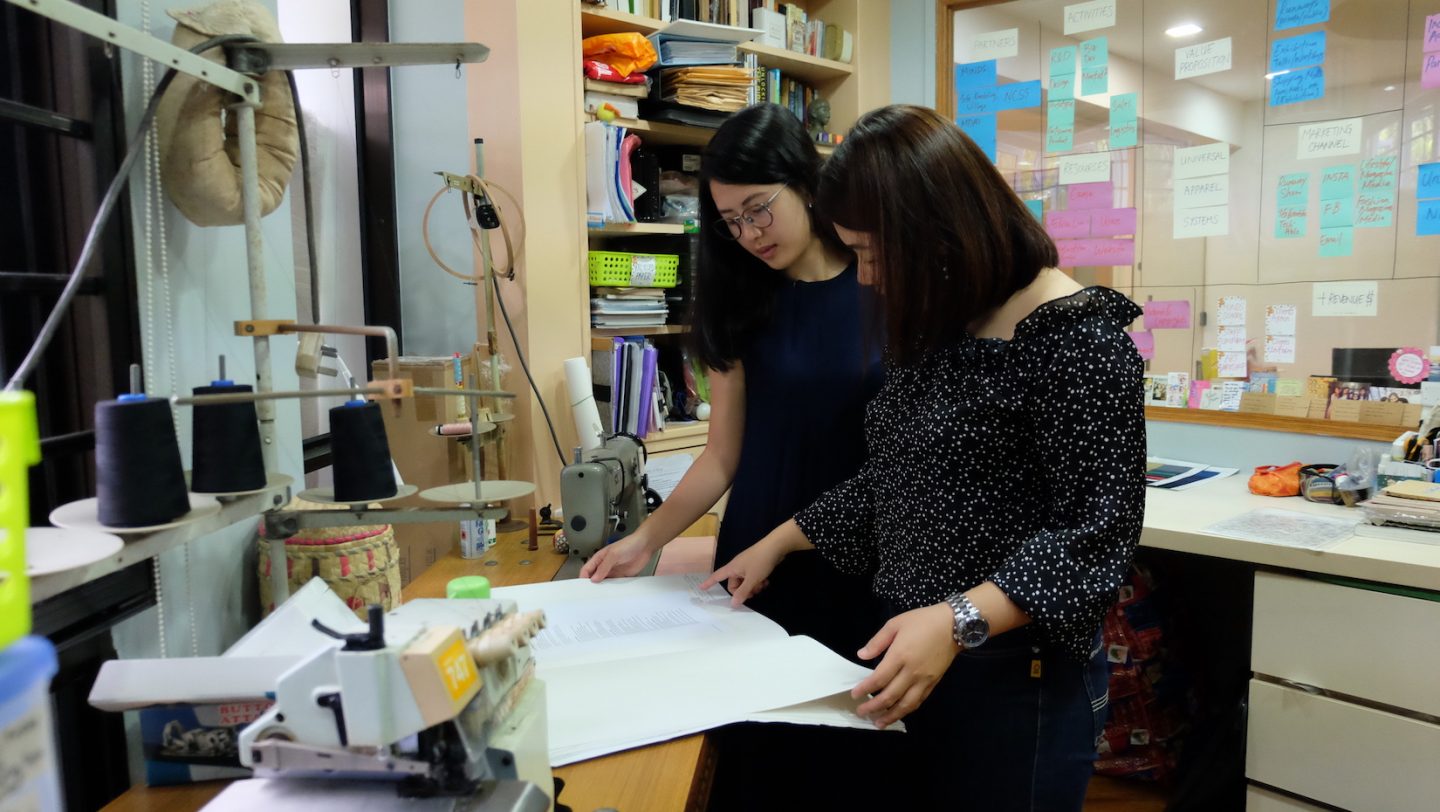
Elisa has two sewing machines and she currently works from the family home. Photo by Ian D Mari.
“I was in a wheelchair and thinking what else can I do? Maybe I could just try sewing, since grannies can do it, so can I,” she recounts.
“I could just try sewing, since grannies can do it, so can I.”
So she started attending tailoring classes over the weekends and in the midst of making blouses and A-line skirts – one of which she still wears today – she fell in love with the craft of sewing and pattern-making.
It got to the point where the teenage Lim wanted to enrol in fashion school after her O-levels, to the dismay of her father, a pastor who always hoped his firstborn would become a teacher.
“He always thought it was too messy an industry and didn’t want his daughter to be involved in it,” she laughs as she recalls his bewilderment, especially since fashion was not a typical topic at home.
Divine appointment
For someone who didn’t take Art as an O-level subject – and who used to fail it in secondary school – Lim says she “prayed really long to get into an art school”. From the day she started at Lasalle College of the Arts, her constant prayer was for God to show her how she fit in the fashion industry as the luxury market didn’t resonate with her.
And He did. In her third year, a doctor – the cousin of an acquaintance she’d only just met – approached her to design hospital gown alternatives and exercise garments for his bed-bound patients.
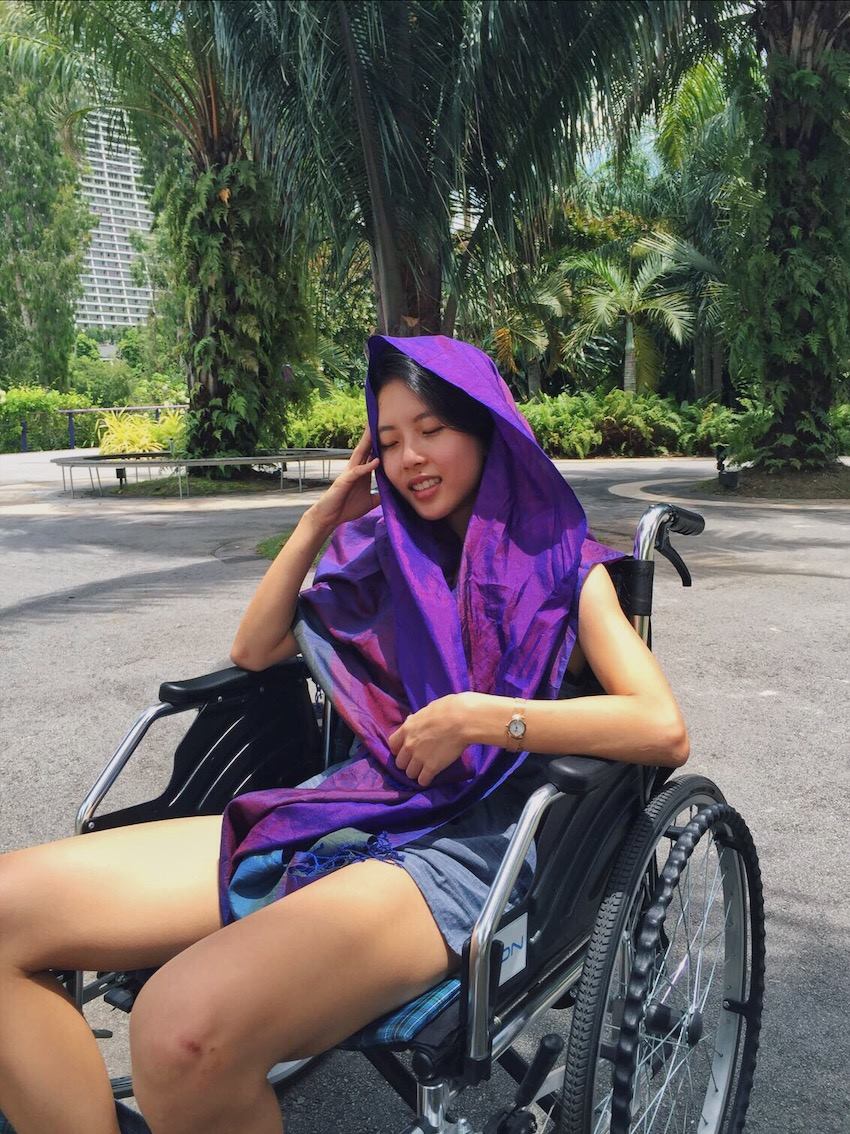
It was from going around Gardens by the Bay on a wheelchair that Elisa realised that she needed to make sure there would be enough fabric under the thigh to prevent heat rash from the constant friction with the seat fabric. Photo courtesy of Will & Well.
“This is clearly a divine appointment,” she says emphatically. “It opened the door to an entire aspect that my craft, which I love so much, could serve.
“It opened the door to an entire aspect that my craft, which I love so much, could serve.”
“Having grown up witnessing my parents serving the community, it was very important to me.” Lim’s mother works in the social arm of the church while her two younger sisters are involved in special needs education.
As Lim did more research and the doctor introduced her to other organisations working with beneficiaries who had a wide range of needs, she became more certain that this was her calling.
“It’s very exciting. Every time I hear of a dressing challenge, I know there’s something I can do for them because with the technicality of the craft, there’s a solution out there,” she explains.
Blazing a trail
With her new-found purpose, Lim continued with her degree at Lasalle while focusing on fashion for those with disabilities. But it was such a niche and new area that even her lecturers were not comfortable with it, calling it a “make or break” project.
She needed another confirmation from God. This time, it was a pastor at a Bible camp, where no one knew her, who prayed for her and said: “You’re going to be a trail-blazer and I see you running with an Olympic torch with a bunch of people behind you.”
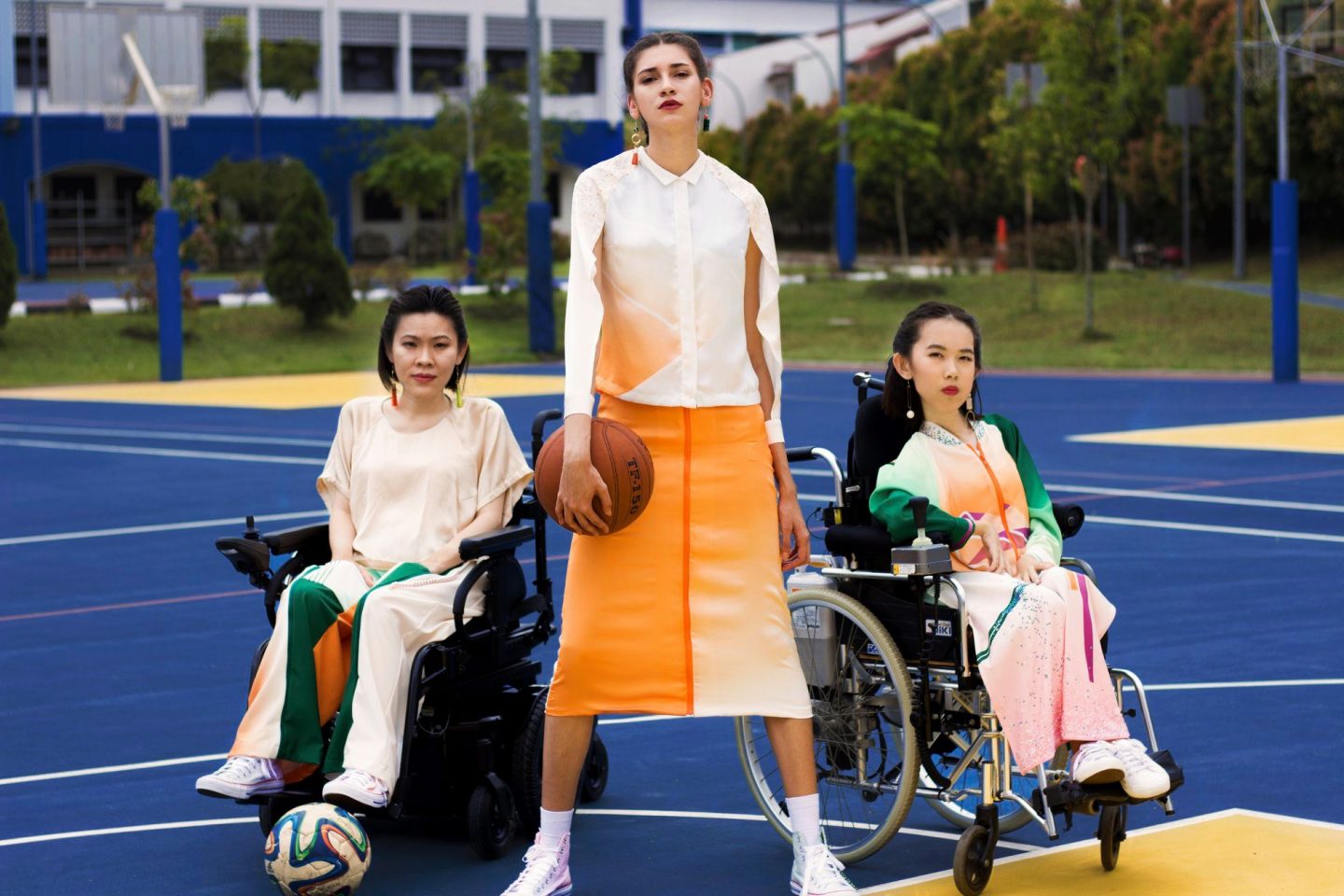
Elisa’s final-year project, titled 1000MPH, was inspired by activewear and designed for wheelchair users. Photo courtesy of Will & Well.
That was her answer and she pushed ahead with her final-year project on designs for wheelchair users. And she knew it could not be driven purely by functionality, “or else you might as well just wear hospital garb”, she quips.
“I see you running with an Olympic torch with a bunch of people behind you.”
In one of her research interviews with a wheelchair-bound client, Lim asked her what is important to her when picking out clothes. As long as it looks good on me, came the reply.
“That was perspective for me – it wasn’t about the function,” muses Lim. “Functionality is a bonus but it was really about how clothes can reflect your identity.”
To better understand the challenges wheelchair users face, she even rented a wheelchair and took it for a spin at Gardens by the Bay. She learnt very quickly that her clothes should be of thin, breathable and natural fabric to keep cool in Singapore’s heat and she should cut the crotch area in a way to reduce creases so it looks neater.
“Just for me”
When Lim graduated in 2017, her final-year project morphed into the Will & Well label – “as long as you have the will to lead a good life, we’ll make it well for you”. She taught art and worked part-time as a project manager to finance her fledgling business, operating out of the family home.
She started by making customised clothes for clients ranging from stroke or dementia patients to those recovering from surgery, as well as making alterations for people with disabilities so that the clothes fit and drape better.
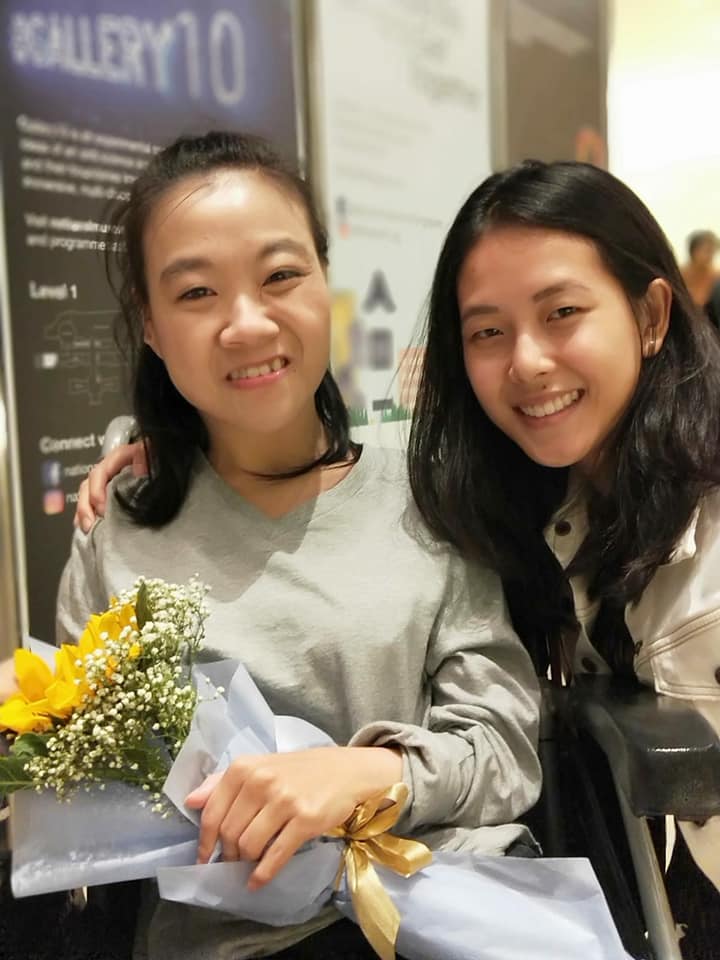
Stephanie (left) was approached by Elisa for her research on inclusive fashion. Stephanie also modelled for Elisa’s final-year project, which she said was a dream come true as she always wanted to be a model. Photo courtesy of Will & Well.
Stephanie Esther Fam, 34, a freelance public speaker who has cerebral palsy that affects her limbs, is one of Lim’s clients. Lim remembers how Fam broke down crying after modelling in her final-year project and told her: “I’ve never experienced somebody who would do something that truly benefited me, for me.”
“These are the instances that keep me going because as long as our solution benefits someone, that’s all I need to do,” Lim adds, turning pensive.
Going mass
Last year, she launched the label’s first e-commerce collection, which has inclusive features and can be worn by everyone. The men’s shirts sport magnetic buttons that come together easily, good for those with impaired hand dexterity.
As for the dress with a front zip, it was inspired by an old woman in her seventies who told Lim that she’s stopped wearing dresses ever since her husband died and she lives alone – she can’t reach the zip at the back.
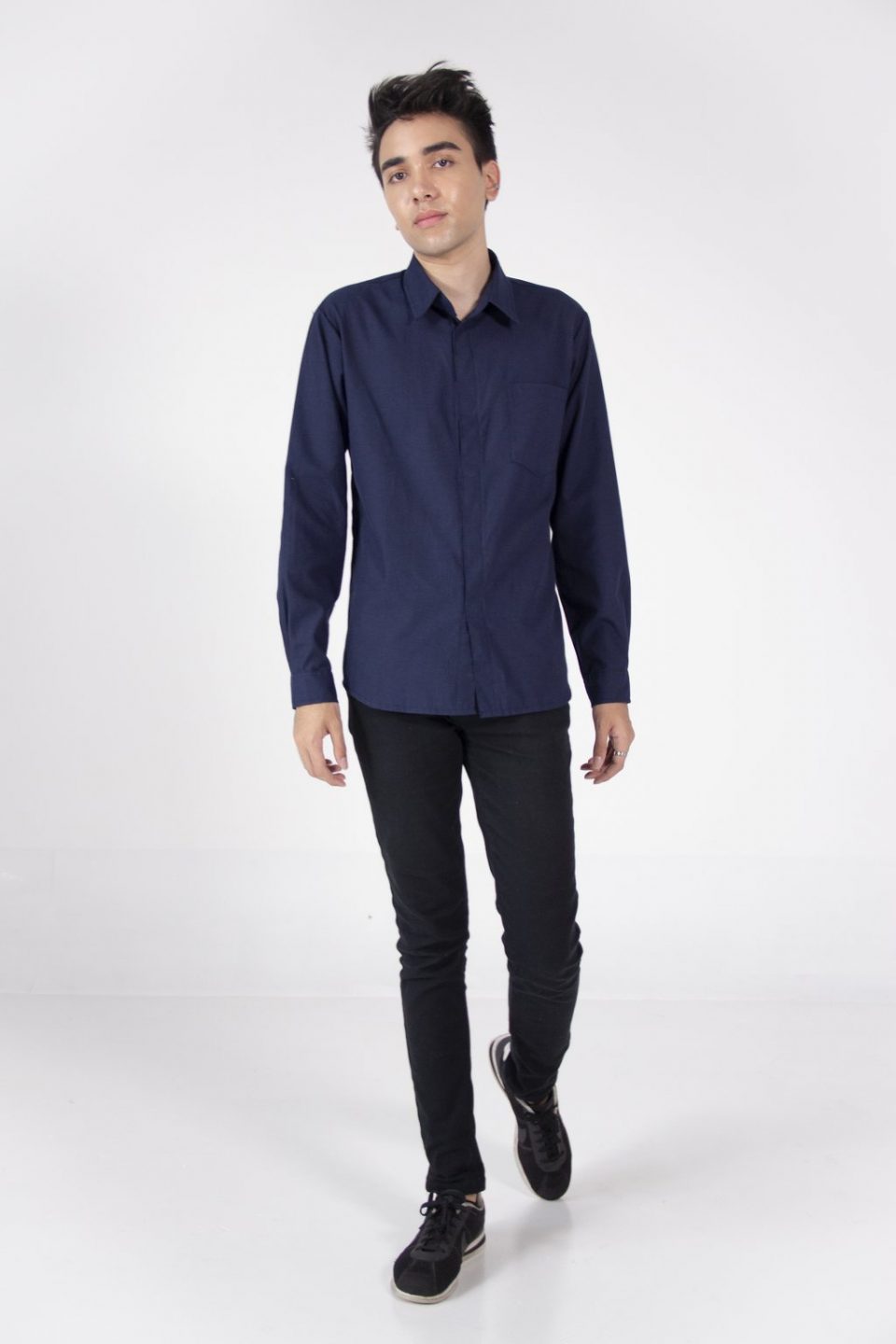
This shirt from the e-commerce collection features magnetic buttons along the front and on the cuffs that snap together. Photo courtesy of Will & Well.
Lim is also focusing on designs that have caregivers in mind because Yip Pin Xiu, three-time Paralympic gold medallist and Nominated Member of Parliament, once told her: “If you can’t make it easier for the person to wear, make it easier for the caregiver to put it on for the person.”
Hence the collection includes a pair of unisex trousers with full-length zips down the front which make it easier for caregivers to manoeuvre their charges in and out of them. They also have cloth handles that caregivers can use for wheelchair or toilet transfers.
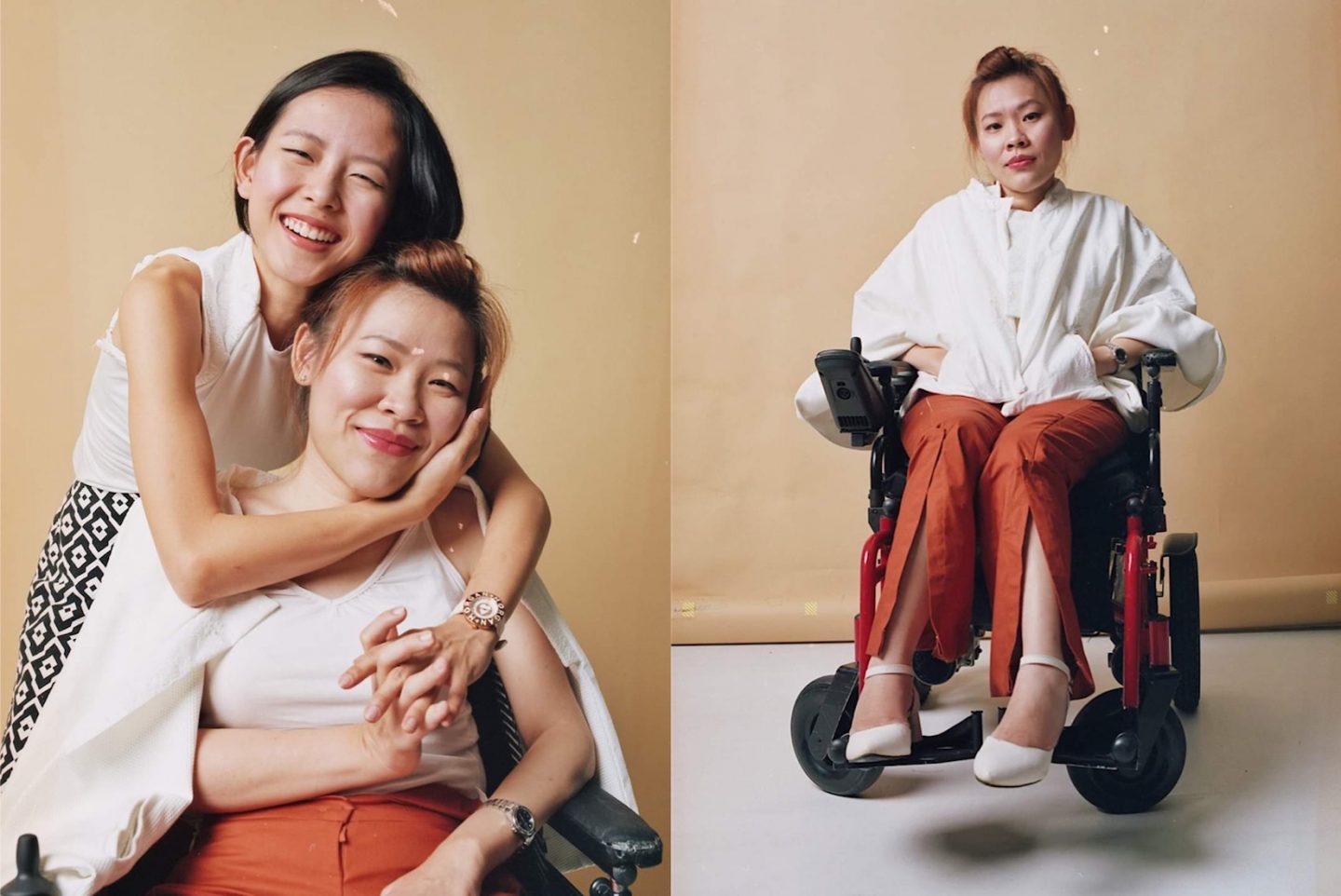
Yean Cheng was one of the first beneficiaries who saw Elisa from the early days of her research to the setting up of the fashion label. She models the usefulness of the full-length zips along the front of her trousers. Photo by Marcus Li.
The collection was meant to educate the public on their design philosophy, which is to “design with the forethought for the minorities” and still serve a wider group.
Look at the lift in the MRT stations, she explains. It’s the most efficient way to get in and out of the station. “It’s designed for the minorities but it’s so good that everyone, including the abled, wants to use it. That’s the design idea for Will & Well too.
“And if we’re talking about inclusion, it doesn’t make sense to say I only make clothes for persons with disabilities.”
Gift from God
Lim has been working full-time on the label since April and plans to hold more pop-up stalls in Singapore while growing the business in the region. Locally, she has been holding sewing workshops so caregivers will be able to rework the wardrobe of their charges.
“I want to help them help themselves. If I impart the process to them, then they can continuously do that for what they have at home instead of getting me to customise for them,” she says earnestly.
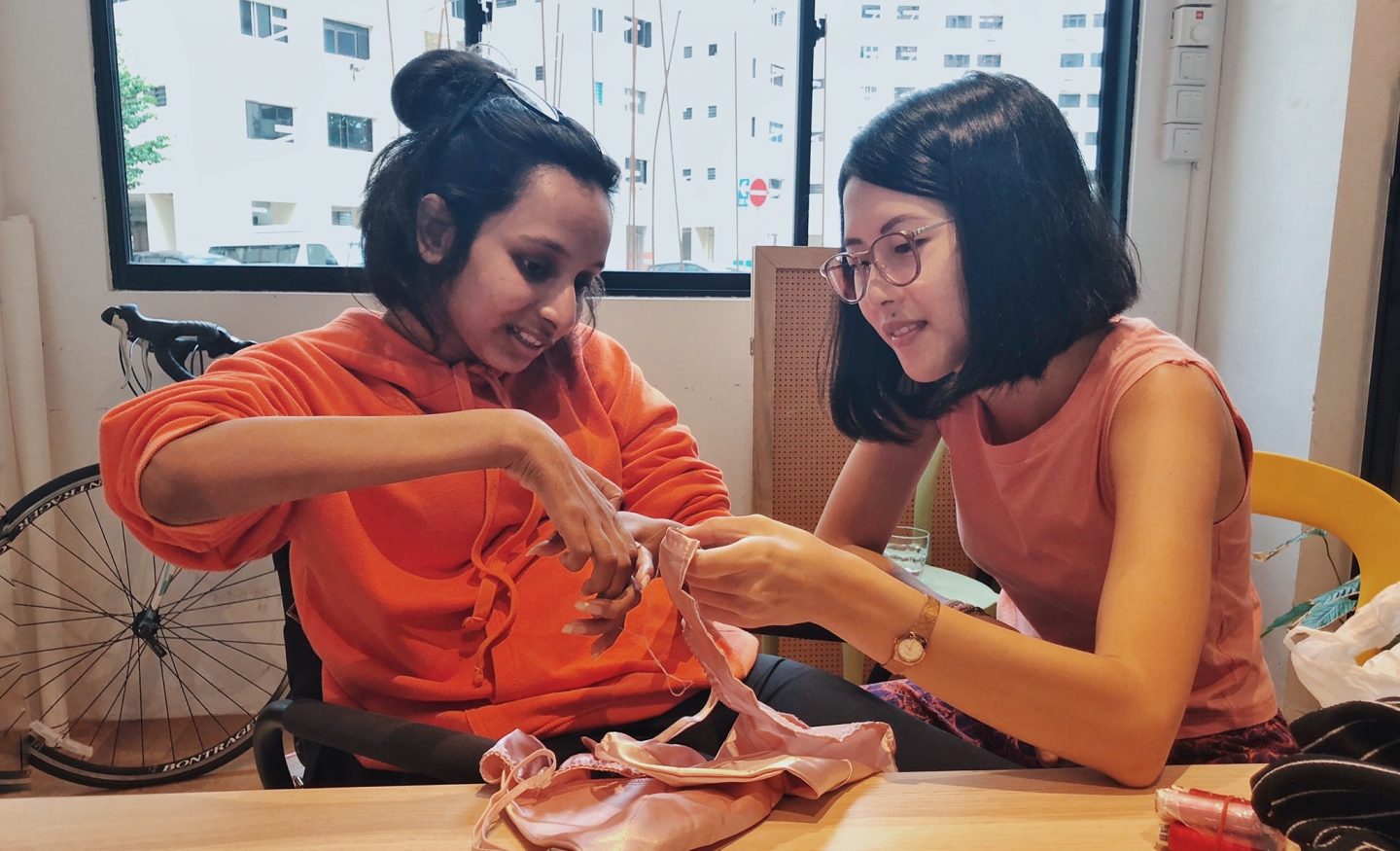
Elisa has been holding regular sewing workshops for clients and their caregivers so they’ll be able to alter their clothes to fit their needs. Photo courtesy of Will & Well.
But isn’t that just making yourself obsolete?
“Initially when I was navigating how to run a business, people kept telling me, ‘You need to protect your work.’
“But you can’t patent your clothes’ function. If someone else can do it better than me, and it’s to serve someone else, by all means please do it.”
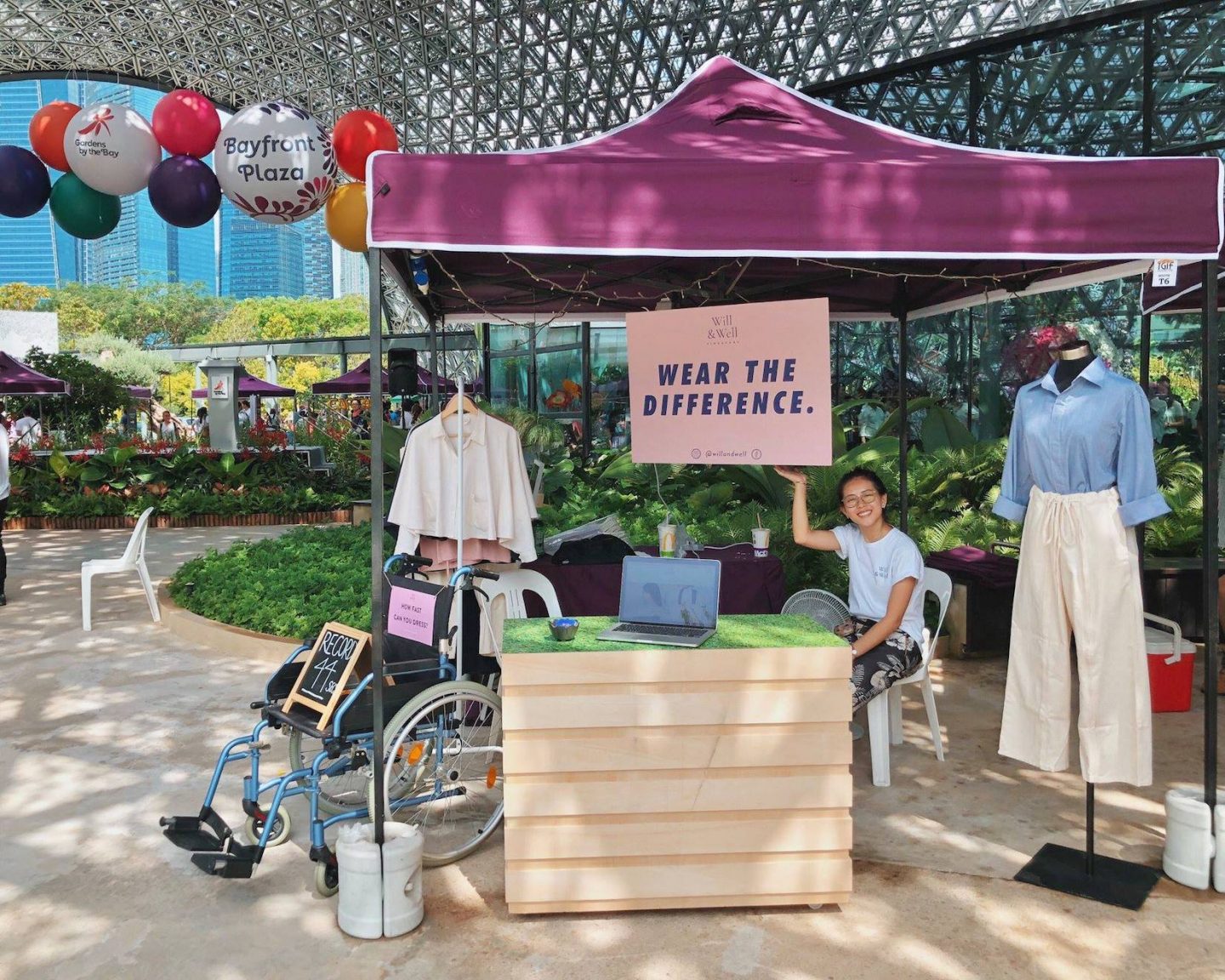
At these pop-up stalls, Elisa runs a contest called “How fast can you dress” to show how quick it is to get ready with her clothes. Photo courtesy of Will & Well.
Lim also recently received a scholarship to study a Masters in Social Innovation course at the University of Cambridge. Aimed at leaders in organisations, the two-year part-time programme is delivered through online lessons and week-long residentials in the UK.
“The average age is 35 and I’m 25. This is the girl who cannot study and who never did well in school,” she guffaws. “The masters, rather than a way to something in the future, was a gift from God.”
To her, fashion is just a medium and she wants to learn how organisations can do good while still remaining profitable.
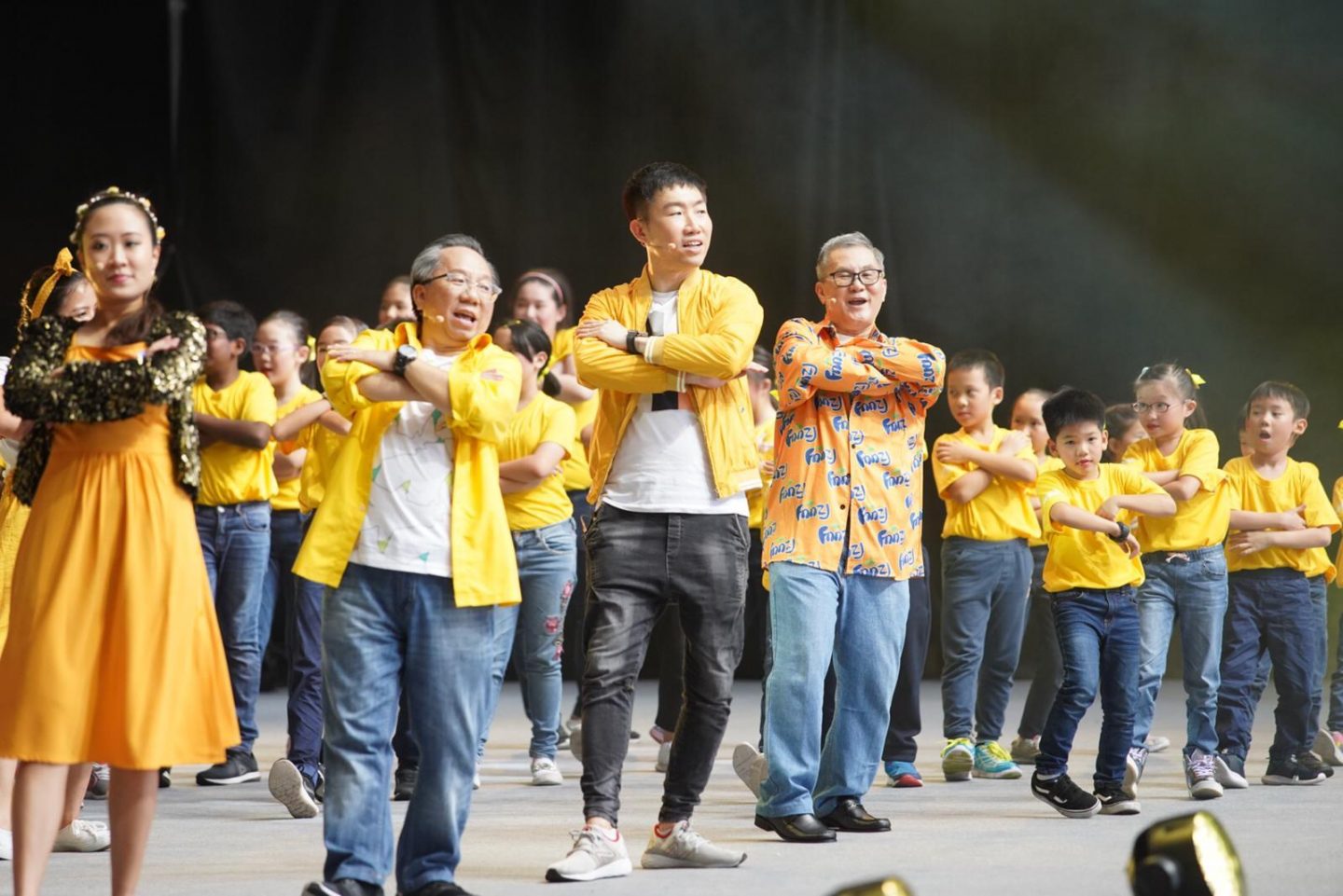
The Children’s Rally during the Celebration of Hope in May was a riot of colours and Elisa was part of the team that styled the performers. Photo courtesy of Celebration of Hope.
For now, as she juggles the company, her studies and ministry – she leads a cell group, whose members are all older than her, after being reluctantly convinced by 2 Timothy 4:1-8 – she’s reminding herself to open the door when she hears Jesus knocking (Revelation 3:20). She says she often gets excited and stands at the door listening to Him and doing His will but forgets to actually open the door and be in His presence.
On her wrist, Lim wears a delicate rose gold bangle engraved with the words “Consecrated to God” – the meaning behind “Elisa”, the name her parents gave her.
“I wear it every day because it reminds me of my mission,” she pauses for dramatic effect, before ending with a big laugh. “You’re sold to God, before you can even decide for yourself!”
–



